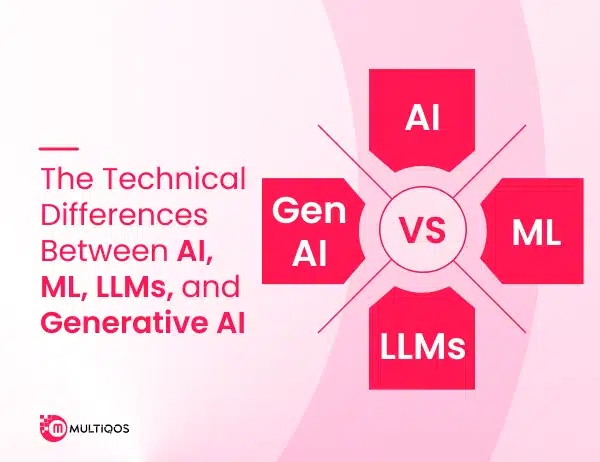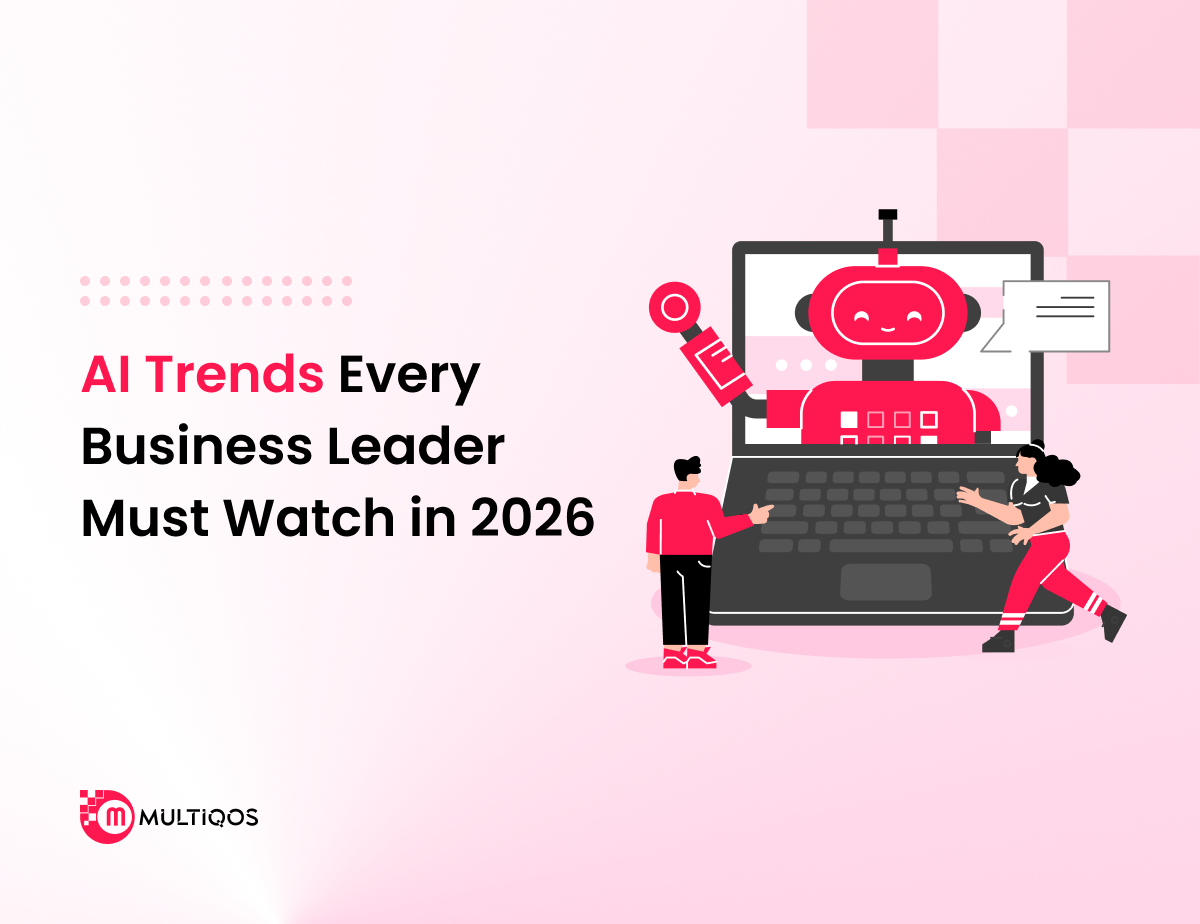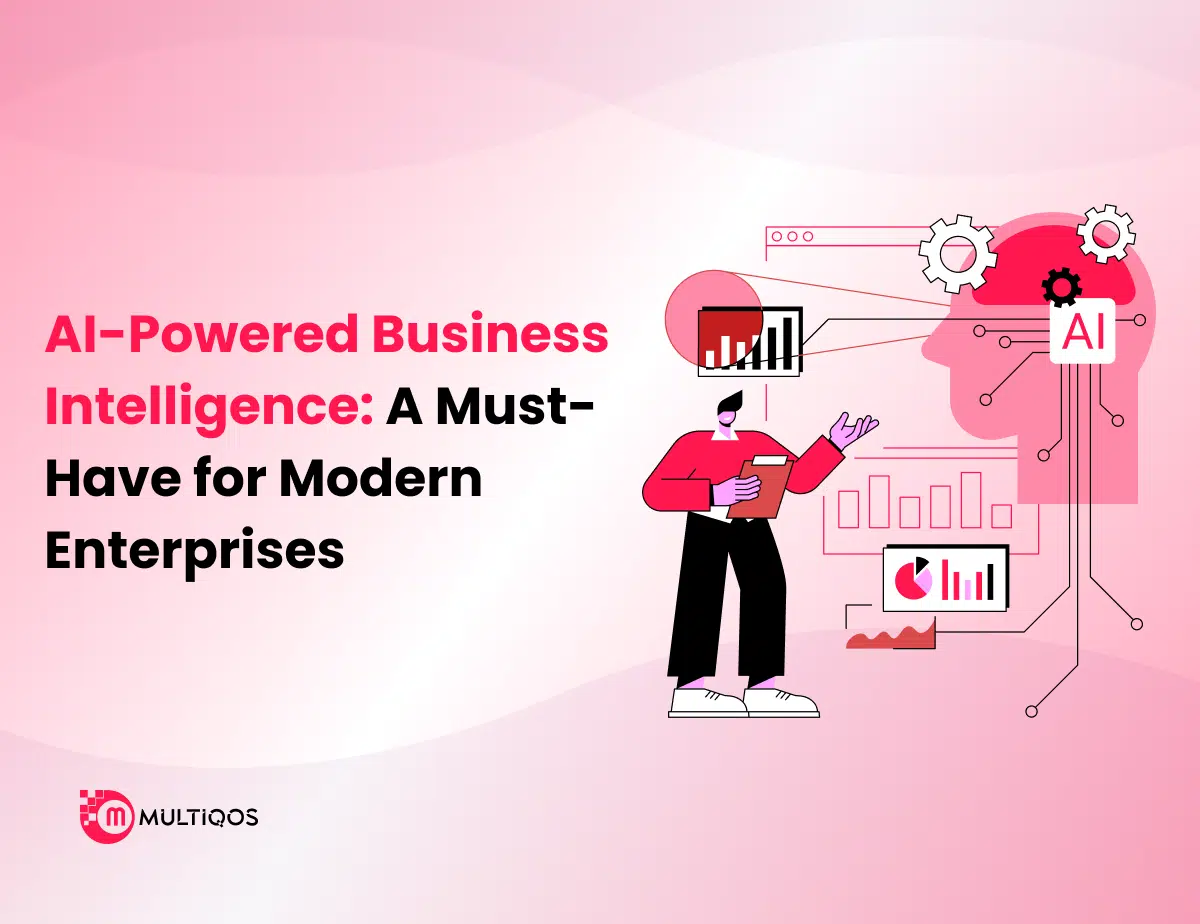The Technical Difference Between AI, ML, LLMs, and Generative AI

Summary:
Understanding the difference between AI, ML, LLM, and Generative AI is essential as these technologies shape modern innovations. While AI is a broad concept that involves machines simulating human intelligence, ML is a subset that enables systems to learn from data.
LLMs, like GPT, are advanced ML models trained on large text datasets to understand and generate language. In contrast, Generative AI focuses on creating new content such as text, images, or code using techniques like transformers and GANs. This blog explores their core functions, technical distinctions, and how they interrelate to provide a clear and concise understanding of each.
Introduction
Technology is advancing at the speed of light. You may have noticed that some terms like AI, machine learning, large language model (LLM), and Generative AI are used interchangeably. While they appear to be related, each one of them is unique in its own way. The difference between AI, ML, LLM, and Generative AI is important not only for tech experts but also for everyone who uses or is impacted by technology. We will go through each term, clarify the technical differences, and discuss how they all interrelate within intelligent systems in this blog.
Breaking Down the Key Terms: AI, ML, LLM & Generative AI
What is AI?
AI stands for the domain of computer science that is concerned with the building of systems that can mimic human Intelligence. Such systems perform multiple actions such as overcoming challenges, reasoning, perceiving, learning, and understanding languages. To promote AI development, the creation of intelligent agents with new data input, computational power, and algorithms.
In order to really understand the difference between AI, ML, LLM, and Generative AI, it is important to see AI as an overlapping concept. ML, LLMS, and Generative AI are all special in AI ecosystems. While AI incorporates the general goal of mimicking human intelligence and focuses on learning from ML data, LLMs specialize in language functions, and generative AI emphasizes the formation of material. In short, AI is the basis on which these more concentrated technologies are created.
What is ML?
ML is a subset of artificial intelligence that allows the system to learn from data, identify patterns, and make decisions with minimal human intervention. Unlike traditional programming, where the rules are clearly defined, ML development depends on feeding the algorithm with large datasets so that the system can improve performance over time. The recommended engine that uses statistical models and data-driven techniques provides strength for applications such as fraud detection systems and future indication analysis tools.
Understanding the difference between AI, ML, LLM, and Generative AI is important for navigating the technical landscape that is growing rapidly. While AI is an overlapping concept of intelligence screening machines, the ML technique that allows these systems is learning from experience. LLMs are advanced ML models trained on large text datasets to understand and generate human language. It creates a basic layer that supports the possibilities of both LLM and Generative AI systems.
What is LLM?
LLM is an advanced type of machine learning model designed to understand, generate, and manipulate human language. Trained on a large scale of text data, trained on volume, LLM linguistic patterns, reference, and meaning, especially transformer architecture. These models, such as GPT or BURT, can demonstrate a series of natural language features such as summaries, translation, emotional analysis, and condensed reactions, often at the human level of flow and understanding.
When you discover the difference between AI, ML, LLM, and Generative AI, it is important to note that LLM is a specific application of machine learning under the extensive AI umbrella. While AI is the general science of creating intelligent systems, ML refers to the algorithms that help these systems learn from data. LLM represents a more concentrated use of ML for understanding languages, and they are often the most important components of general AI devices that produce outputs such as text or communication. In short, LLMS bridges the gap between raw data processing and natural human communication.
What is Generative AI?
Generative AI refers to a subset of artificial intelligence models designed to create new content, such as texts, images, audio, code, and even video, based on the pattern learned from current data. Through techniques such as deep learning and neural networks, especially transformer-based architecture, Generative AI development enables machines to make outputs that carefully mimic human creativity.
Generative AI expands this concept just beyond the language by using models such as LLM and Generative Adversarial Network (GAN) to create new and original materials. This is a significant area of AI evolution, which leads to the boundaries of machines that can create and contribute.
Breaking Down the Difference Between AI, ML, LLM, and Generative AI
The difference between AI, ML, LLM, and Generative AI can be difficult to a bit tricky, but we have simplified it for you. Here is a quick comparison that can help you understand how each one is different.
| Aspect | AI | ML | LLM | Generative AI |
| Core Function | Mimic human intelligence (reasoning, learning, problem-solving) | Learn patterns from data and improve over time | Understand and generate human-like language | Create new, original outputs from learned patterns |
| Techniques Used | Rule-based systems, ML, deep learning | Supervised, unsupervised, and reinforcement learning | Deep learning (mainly transformer architectures) | Transformers, GANs, VAEs, diffusion models |
| Example Applications | Robotics, chatbots, expert systems | Fraud detection, recommendation engines, and speech recognition | Chatbots, virtual assistants, sentiment analysis | AI art generators, text-to-image tools, code generation |
| Relation to Each Other | Umbrella term for all intelligent systems | A core method within AI | A specialized ML model for language tasks | Often powered by LLMs and other ML models |
| Key Focus | General intelligence | Learning from data | Language understanding and generation | Creative and generative capabilities |
Conclusion
Understanding the difference between AI, ML, LLM, and Generative AI is important in today’s rapidly developing technical scenario. While AI acts as an overrun concept, ML brings data in manual learning into sports, LLMS specializes in human-like language treatment, and generative AI pushes the limits of creativity over generations. A separate role in running innovation in each industry still plays a mutual role.
If you want to gain the full potential of these top-notch techniques for your business, it is necessary to work with the right expertise. Hire AI developers who understand these differences and can create a solution to match your goals. Whether you start small or target massive transformation, the right team can make sure to turn your imagination into real-time outcomes.
FAQs
Yes, LLMs are often used to create human-like lessons and conjunctive outputs in Generative AI, particularly when it comes to apps like content generation tools or chatbots.
Unlike traditional programming, where the rules are clearly identified, learn from computer patterns, and improving performance over time without updating.
No, Generative AI includes a wide range of material construction, from lessons and images to music, codes, and even videos, using models such as LLMS, GAN, and dissemination models.
Get In Touch






